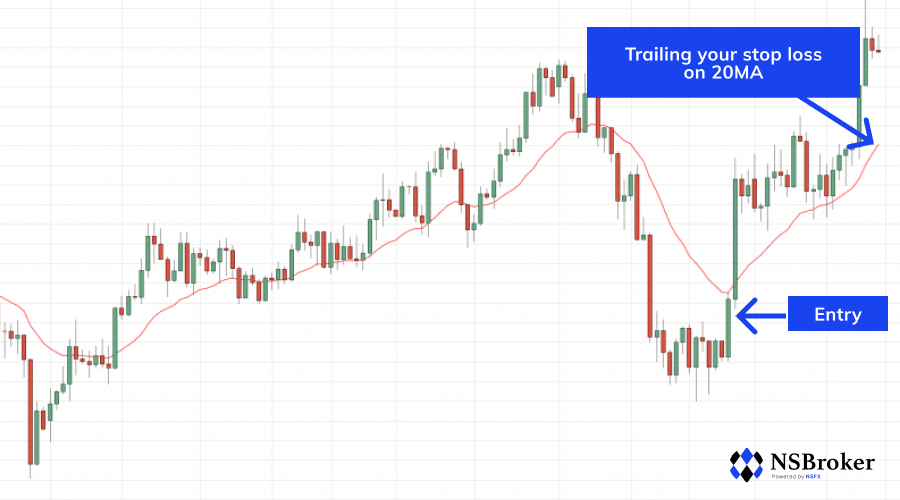Trading strategies for stocks and forex

FFIn trading, there are many different markets in which a person can choose to operate. They vary based on the assets the operations with which are being conducted. Depending on a particular market, different trading strategies have varying degrees of efficiency. For instance, a framework that proves itself to be effective when applied to forex can be mostly useless in relation to indices. Therefore, it is important for a trader to have a general understanding of which strategies are best to apply to which markets.
Before discussing this topic, however, we consider it necessary to talk more about trading strategies in general. This concept is frequently used by those involved or interested in trading. But what is it? A trading strategy can be defined as a set of methodological instruments, long-term objectives, and intermediate milestones on which a person relies in their trading activities and decisions.
There is a widespread misconception among beginners that one could find and exploit a universal, inevitably victorious strategy that would generally be applicable to all markets. This idea is as absurd as it sounds. There is not a single universal recipe for success. In a complex and multifaceted trading system, a person must demonstrate flexibility, adaptability, and the ability to make decisive strategic shifts in a changing environment. Therefore, instead of looking for one universal strategy, traders should understand the variety of existing models, know their specifics, and be able to apply their elements depending on the situation. Among the many assets that traders work with, forex and stocks are some of the most common and popular. In the next part of this article, we will discuss the trading strategies most suitable for interacting with these assets.

Trading strategies for forex
The main feature that makes the foreign exchange market distinctive is its temporal availability. Hence, unlike many other fields, it is open five days a week, 24 hours each day. As a result, you should never wait for long to get involved in forex operations. This property makes forex highly liquid and, hence, suitable for most strategies, from day trading to algorithmic models. There are many various currency pairs forex traders deal with. One of the most popular combinations is the EUR/USD couple. Considering the longevity of the forex market’s functioning during the week, in a relatively short period, this linkage can be objected to various market conditions, including up- and downtrends, as well as sideways dynamics. Due to this reason, many traders prefer to utilize Bollinger Bands strategy when dealing with foreign exchange.
This strategy relies on the use of Bollinger Bands, a particular technical indicator that determines the price deviations in the conditions of the quiet markets and identifies the markets with the high chances of trending in a particular direction due to increased volatility. Visually, this instrument consists of three lines. The one in the middle indicates an SMA (simple moving average) of twenty days. The line above indicates the upper band’s value. Logically, the bottom line is used to visually represent the lower band. In their combination, these elements comprise the standard price deviations in a particular market.
The rules used in the strategy that utilizes Bollinger Band mostly revolve around the patterns connected with the band movements. For instance, according to the first principle, the widening of the bands indicates increased volatility of the markets, which could lead to the launch of a new trend. The second rule states that when the bands get closer together or even contact each other, the volatility of the market is less palpable, so the opportunity of a sideways market emerging is higher.
Bollinger Bands are useful in themselves as an instrument to measure the market’s volatility. Meanwhile, they are less helpful in determining the trend’s direction. Therefore, some traders may prefer to also utilize a trend filter while resorting to this instrument. For instance, they may apply the moving average that will indicate the average price dynamics for a set of retrospective bars. Based on it, it will be easier for a trader to define the direction of the price dynamics.
There are several significant rules associated with this aspect of Bollinger Bands. For instance, if the price exceeds 200 EMA (exponential moving average), you need to either trade long or limit your actions to buying. In turn, if the price falls lower than 200 EMA, it is better for you to trade short or sell the assets. To determine the aforementioned trends, you should focus on an orange line in the lower part of the graph. It represents the average value that the last 200 bars had (200 EMA). You should keep it in mind when tracing the price movements.
On the one hand, these rules and patterns may decrease the number of trading opportunities available to a person. At the same time, they create a clear canvas within which a trading strategy develops, facilitating a person’s decision-making. Besides, it can be viewed as a mere carcass, to which the traders will add all the elements they consider necessary.
Trading strategies for stock markets
Similarly to forex, the stock market is suitable for different types of strategies, such as position trading, swing trading, price action, and many other models. Investors tend to acquire the stocks of companies to keep them on hold for prolonged periods, waiting for the appreciation of stock prices. Therefore, they usually stick to this type of market for a longer time. The agents operating in the stock markets include not only traders but also investors who seek to get profits from the development of the companies the stocks of which they acquire. Investors do not seek to speculate on stock prices but genuinely want to get their shares in a particular company. Therefore, the variety of strategies they use is wide and multifaceted.
If you want to pursue a career linked to stock markets, an essential piece of advice you should follow is sticking to the stocks of the companies you know as reputable. Choosing the shares of one of these companies is a pretty good starting position because you are sure that it is not just another transit agent in the market but an organization worthy of respect and trust. For example, you can consider Google, Apple, Amazon, Netflix, and many other world-renowned and influential corporations as the objects to focus on. Of course, when dealing with each of these companies’ stocks, you should take into account the specific peculiarities of each. However, the similarities between them are more numerous, so that it is possible to come up with one general model applicable to different companies in this regard.
One of the most widespread ways of dealing with stock trading is utilizing the exponential moving averages (EMA) to capitalize on trends. In terms of this strategy, a trader monitors the market situation in search of a fast-moving average that is to cross a slow-moving average. The contrary situation is applicable as well. In this context, a fast-moving average relies on a set of historical bars with a lower value, while a slow-moving average utilizes the opposite set of bars.
There are a few rules that could be applied to this model of stock trading. First, if the 8 EMA crosses above 21 EMA, you need to go long. If, on the contrary, they cross below 21 EMA, it is better for you to go short. Several elements of the charts related to this trading model need to be explained. Thus, the red lines in the graph indicate the below crossings between the fast and the slow-moving averages. The green lines indicate the above crossings of the same nature.
In essence, the strategy built on the crossover of moving averages is similar to position trading and adapted to trend-following in the conditions of stock markets. One important thing to remember about this strategy is that it may cause a larger amount of losing trades than that of the winning ones. However, in this regard, it is crucial for you to ensure that your rewards in the winning deals are higher than your total losses. It means that you need to hone your risk management and demonstrate a thorough approach to balancing your resources when dealing with stock markets.










